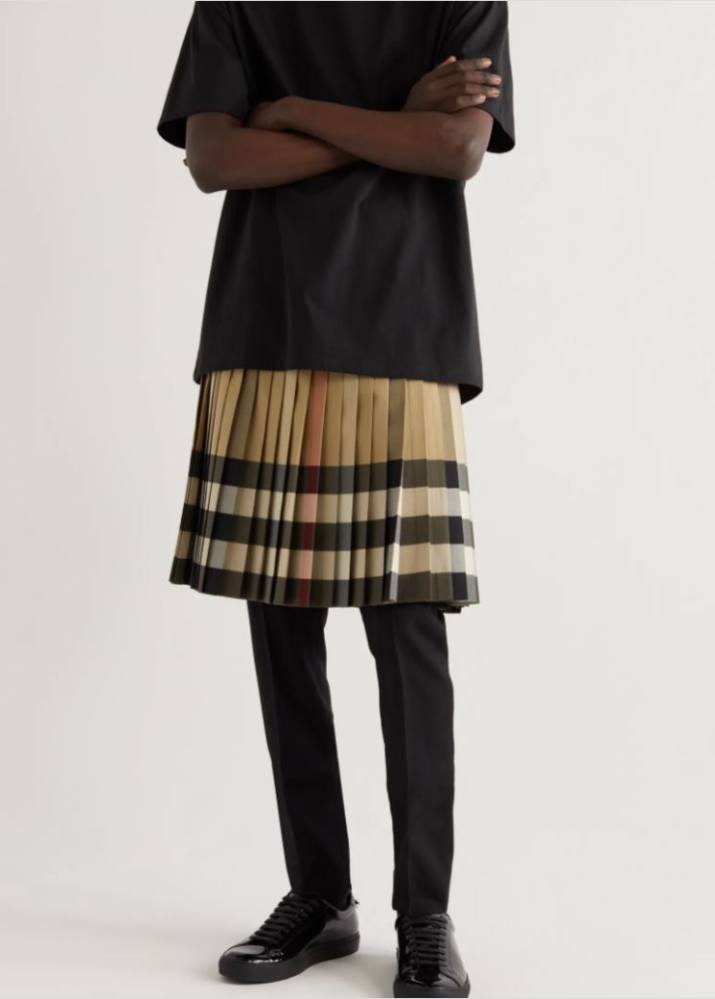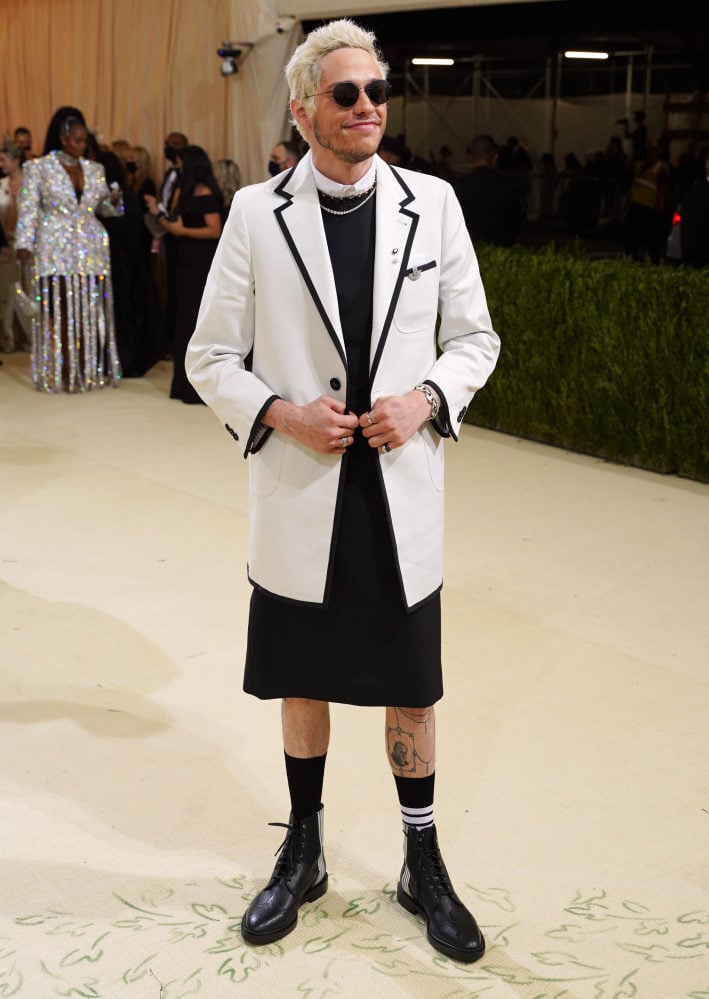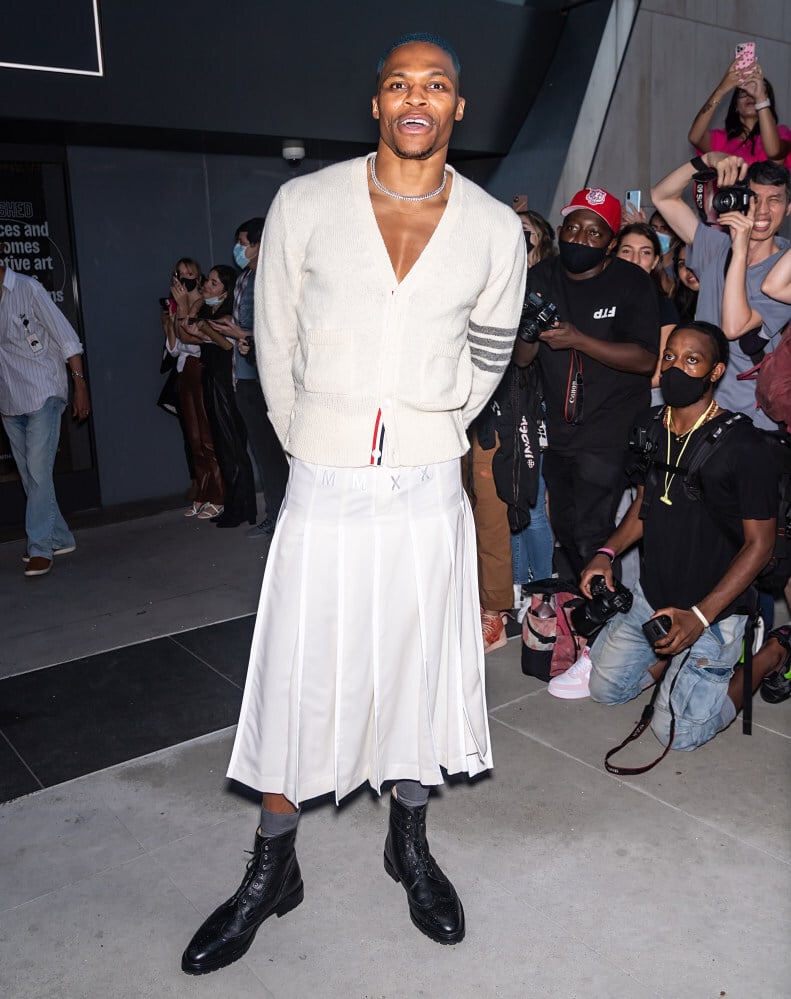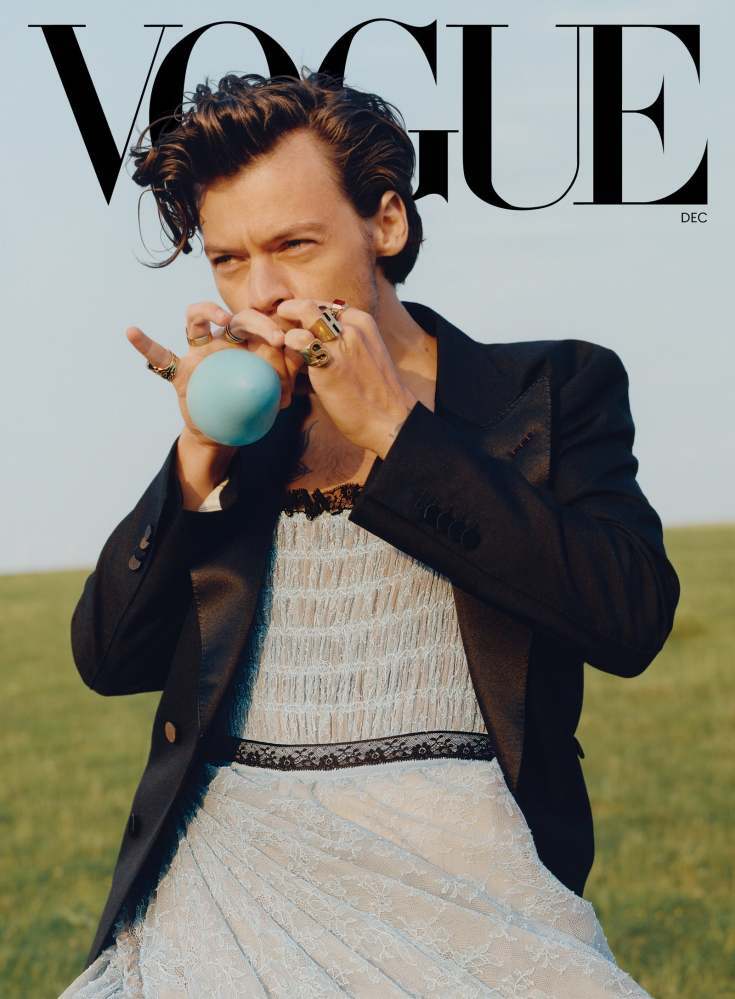
Men’s skirts are having a moment – look at Harry Styles, Pete Davidson, Russell Westbrook and Kid Cudi. Is it time to end fashion’s last taboo?
- Harry Styles appeared on the December 2020 cover of US Vogue in a Gucci dress, while comedian Pete Davidson wore a skirt to the 2021 Met Gala in New York
- The look is gathering serious momentum – bad news for conservatives – with men’s kilts, skirts and dresses all over the autumn/winter fashion catwalks
Is a man in a skirt fashion’s last taboo?
When Los Angeles Lakers basketball star Russell Westbrook attended Thom Browne’s spring/summer 2022 show at New York Fashion Week in Browne’s white pleated men’s skirt, it prompted some apoplectic reactions on Instagram from the American sporting fraternity.
“Not no n****r I ever grew up and messed around with is gonna be walking around the goddamn streets with a dress on and some motherf***er boots and keep my respect and say he heterosexual!” shouted former NBA player Kwame Brown in an expletive-filled video rant.
Former American football star Larry Johnson posted: “There is an Effeminate Agenda going on amongst the NBA & NFL elite, peddled by high ranking Masons/handlers to indoctrinate the heterosexual sports world without them knowing, for the buying power of LGBTQ community.”
The reactions echoed the furore seen in April after rapper Kid Cudi wore a floral dress designed by Louis Vuitton men’s creative director Virgil Abloh for an appearance on Saturday Night Live.
It was intended as a tribute to rock band Nirvana’s Kurt Cobain, who wore floral dresses on stage in the early 1990s. Outrage followed on YouTube, with actor TK Kirkland telling VladTV the stunt defied “the rules of being an African American brother”.

There was frenzied speculation elsewhere it was part of a supposed New World Order conspiracy, an Illuminati “dress humiliation ritual” and/or Hollywood’s alleged ongoing campaign to emasculate black men.
When British pop star Harry Styles appeared on the December 2020 cover of US Vogue in a Gucci dress, American conservative commentators Candace Owens and Ben Shapiro similarly exploded on Twitter, slamming Vogue’s “feminisation” of masculinity as left-wing propaganda.
It’s a curious reaction when you consider that, up until the rise of tailoring in the 14th century, European men had worn unbifurcated garments throughout history – and that in many other cultures today, skirt-like garments such as the Scottish kilt, the Southeast Asian sarong, the Japanese kimono, the Indian dhoti and the North African djellaba remain the norm for men.
From baggy suit to Thom Browne, LeBron shows athletes’ fashion evolution
Westbrook was by no means the only man in a skirt or dress at New York Fashion Week, with another NBA player, Jordan Clarkson, wearing a kilt to Browne’s show and a clearly unrepentant Kid Cudi donning full-length skirts to Studio 189’s New York Fashion Week show and the Met Gala the week after, where he was joined by SNL comedian Pete Davidson, also dressed in a skirt.
Floated by designers such as Jacques Esterel and Rudi Gernreich in the 1960s and Jean Paul Gaultier in the 1980s, the man-skirt has been percolating on fashion-show catwalks for at least six years.
While bad news for the conservatives, the look is gathering serious momentum, with men’s kilts, skirts and dresses all over the autumn/winter 2021 fashion runways – prompting Mr Porter, the menswear portal of luxury e-commerce giant Net-a-Porter, to post an entry on its blog in March asking “Skirts: Are you man enough to wear one?”.

In July, global fashion search platform Lyst revealed that Browne’s menswear skirt had ranked in the 10 most searched items in its hottest items of 2021’s second quarter report – the first time that a skirt has broken Lyst’s top 10 for menswear.
The same search over at luxury retail aggregator website Farfetch yields over 30 listings, from early man-skirt adopters such as Browne, Rick Owens, Comme des Garçons Homme Plus and Yohji Yamamoto, to Homme Plissé Issey Miyake, Molly Goddard, Marine Serre, Marni, White Mountaineering and A Better Mistake.
When 100 men in dresses and skirts marched in protest down Fifth Avenue in Manhattan, New York, on February 7, 2004 to assert their right to wear women’s clothing, The New York Times dubbed it “the birth of the Male Unbifurcated Garment Movement”.


The protesters were en route to catch The Metropolitan Museum of Art’s “Bravehearts: Men in Skirts” exhibition, an expanded version of the earlier “Men in Skirts” show that had been staged by London’s Victoria & Albert Museum in 2002.
One of the brands included in both The Met and V&A shows was Seattle, Washington-based Utilikilts, founded by Steven “Krash” Villegas in 2000. Utilikilts’ “MUGs” [male unbifurcated garments] – a utilitarian interpretation of the Scottish kilt, in heavy duty cotton, with cargo pockets – gained a grass-roots following after selling through stalls at US festivals and fairs.
Although the product eventually garnered a tonne of international publicity, and celebrity clients from Russell Crowe to Robin Williams, it initially raised eyebrows – even in liberal California, ironically.

“They wouldn’t let us in to any show on the west coast in the beginning,” says Villegas, who eventually received an invitation to show at a fair in the conservative stronghold of Texas.
“We were not sure if we were being invited there to have people buy our wares or if there was going to be a lynching, but when we got there it was a full embrace,” he adds. “And people were like, ‘God you’re the best thing ever and boy you’re pissing off a lot of those traditionalists’”.
In 2021 MUG fervour is being fuelled by social media and a younger generation.
I just think the hegemony of the suit has really had such a profound impact on the way we perceive clothing … that anything that moves against that notion is going to have pushback
According to a 2021 report from American advertising insights agency Bigeye, half of Gen Z and 56 per cent of millennials believe traditional gender roles and labels are outdated, while 56 per cent of Gen Z are already shopping outside their gender, according to J Walter Thompson data.
The 21,058 posts under the #meninskirts hashtag on Instagram are dwarfed by the 53.9 million views the same hashtag has attracted on the Gen Z-preferred TikTok platform, where the #ClothesHaveNoGender and its original Spanish version #laropanotienegenero have clocked almost 70 million views between them.
The latter was coined in November 2020 by Spanish maths teacher Jose Pinas, when he posted an image of himself at work in a skirt in support of Spanish schoolboy Mikel Gomez.
A week earlier, the latter had gone viral on TikTok after revealing he had been expelled and sent to a psychologist after wearing a skirt to school. The incident, which prompted a still ongoing series of skirt protests across Spain, was originally inspired by earlier protests in several Canadian schools, where boys started wearing skirts to protest at the sexualisation of women and toxic masculinity.
“I just think the hegemony of the suit has really had such a profound impact on the way we perceive clothing – I think it is so deeply entrenched culturally, that anything that moves against that notion is going to have pushback,” says Michelle Finamore, a fashion historian based in Salem, Massachusetts who curated The Museum of Fine Arts, Boston’s 2019 exhibition “Gender Bending Fashion”.

One of the reasons she first pitched the show to the museum, says Finamore, was because she had noticed a significant shift in thinking amongst designers about what constitutes appropriate “masculine” attire – a phenomenon that has, in the interim, only continued to gather pace.
“When I was putting all this in [the show] it was still perceived as somewhat radical, especially in a city like Boston,” she says. “And now I just see, the last few years, it’s just exploded and I feel a lot of the stigma attached to men in skirts is breaking down.”

